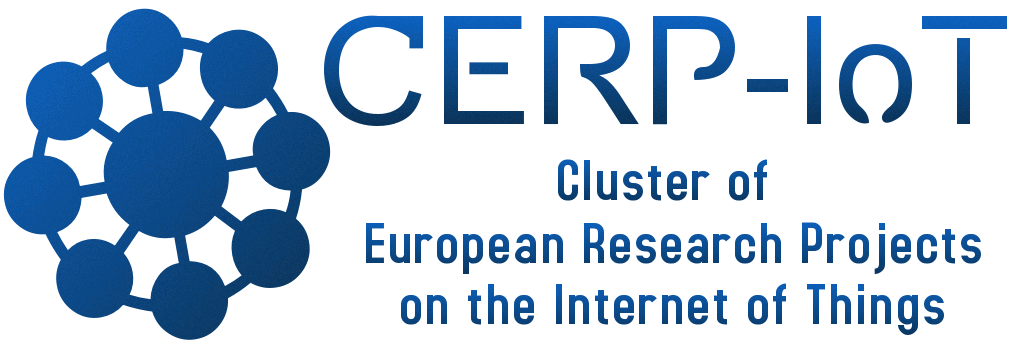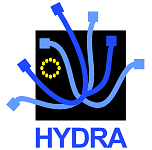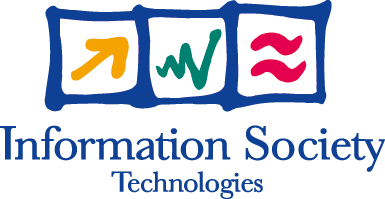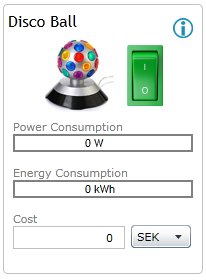FAQ: Terminology
| FAQ (Frequently Asked Questions) >Terminology |
Appliance
An “Appliance” represents a physical device that is dedicated to a single purpose. Appliances refer to more complex physical devices and are especially prominent in the field of home automation or home entertainment.
Top
An “Appliance” represents a physical device that is dedicated to a single purpose. Appliances refer to more complex physical devices and are especially prominent in the field of home automation or home entertainment.
Top
Bridge
A “Bridge” represents a software component that resides inside a Gateway and translates any non-IP communication into an IP based communication. It is used by Hydra-enabled devices with non-IP capabilities to communicate inside the Hydra network.
Top
A “Bridge” represents a software component that resides inside a Gateway and translates any non-IP communication into an IP based communication. It is used by Hydra-enabled devices with non-IP capabilities to communicate inside the Hydra network.
Top
Device Discovery
The process “Device Discovery” covers several steps where a physical device is discovered, semantically resolved and made accessible as a Hydra Device. In order for a device to be discovered in a Hydra network, a definition of the device type must exist in the Hydra Device Ontology.
Top
The process “Device Discovery” covers several steps where a physical device is discovered, semantically resolved and made accessible as a Hydra Device. In order for a device to be discovered in a Hydra network, a definition of the device type must exist in the Hydra Device Ontology.
Top
Device Model
A “Device Model” describes the properties and services that a certain device class offers. The Device Model is expressed using the SCPD XML format of the UpnP standard.
Top
A “Device Model” describes the properties and services that a certain device class offers. The Device Model is expressed using the SCPD XML format of the UpnP standard.
Top
Gateway
A “Gateway” is a physical device with IP capabilities, which manages a set of proxies for controlling Hydra devices. A gateway must support Web Services and UpnP and should also be able to run Hydra Discovery Managers. In addition, a gateway may also host other components of the Hydra middleware.
Top
A “Gateway” is a physical device with IP capabilities, which manages a set of proxies for controlling Hydra devices. A gateway must support Web Services and UpnP and should also be able to run Hydra Discovery Managers. In addition, a gateway may also host other components of the Hydra middleware.
Top
Hydra Device
A “Hydra Device” constitutes the software representation of a Hydra-enabled device and its functionalities, in order to enable access and control. The Hydra Device can either run as a Proxy for the Hydra-compliant physical device on a gateway or it can run embedded in the device. A Hydra Device can obtain Hydra identifiers for its services (HID) and also application-specific identifiers. Furthermore, a Hydra Device implements the “Hydra Generic Services” and “Hydra Energy Services”. For one physical device there might exist one or more Hydra Devices. A Hydra Device might also incorporate services from several physical devices.
Top
A “Hydra Device” constitutes the software representation of a Hydra-enabled device and its functionalities, in order to enable access and control. The Hydra Device can either run as a Proxy for the Hydra-compliant physical device on a gateway or it can run embedded in the device. A Hydra Device can obtain Hydra identifiers for its services (HID) and also application-specific identifiers. Furthermore, a Hydra Device implements the “Hydra Generic Services” and “Hydra Energy Services”. For one physical device there might exist one or more Hydra Devices. A Hydra Device might also incorporate services from several physical devices.
Top
Hydra Device Ontology
The “Hydra Device Ontology” is an ontology that contains knowledge about device classes, their properties and services offered.
Top
The “Hydra Device Ontology” is an ontology that contains knowledge about device classes, their properties and services offered.
Top
Hydra Energy Services
The “Hydra Energy Services” are supported by all Hydra Devices and provide methods to retrieve information from the energy profile of the device and from the energy policy.
Top
The “Hydra Energy Services” are supported by all Hydra Devices and provide methods to retrieve information from the energy profile of the device and from the energy policy.
Top
Hydra Generic Services
The “Hydra Generic Services” are supported by all Hydra Devices and contain a set of meta-data methods that can be used to query the device about its properties.
Top
The “Hydra Generic Services” are supported by all Hydra Devices and contain a set of meta-data methods that can be used to query the device about its properties.
Top
Hydra Identifier (HID)
A “Hydra identifier” (or simply “Hydra ID” or shorter “HID”) constitutes a unique identifier for every Hydra Device, service or resource within a Hydra network. Network Manager generates the HID, is responsible for the matching between logical and physical identifiers and for the propagation of this information to other peers of the Hydra network. The utilisation of this Hydra-specific addressing procedure allows for context-dependant identification of devices, services and resources in a Hydra network.
Top
A “Hydra identifier” (or simply “Hydra ID” or shorter “HID”) constitutes a unique identifier for every Hydra Device, service or resource within a Hydra network. Network Manager generates the HID, is responsible for the matching between logical and physical identifiers and for the propagation of this information to other peers of the Hydra network. The utilisation of this Hydra-specific addressing procedure allows for context-dependant identification of devices, services and resources in a Hydra network.
Top
Hydra Manager
A “Hydra manager” (or short “manager”) constitutes the major building blocks that make up the Hydra middleware. A Hydra manager encapsulates a set of operations and data that realise a specific functionality and is mostly subdivided into several internal components.
Top
A “Hydra manager” (or short “manager”) constitutes the major building blocks that make up the Hydra middleware. A Hydra manager encapsulates a set of operations and data that realise a specific functionality and is mostly subdivided into several internal components.
Top
Hydra Middleware
The “Hydra Middleware” is a collection of interrelated components, i.e. Hydra Managers, that work together to realise a platform of networked heterogeneous physical devices. The Hydra middleware allows such devices to be part of an ambient intelligence environment.
Top
The “Hydra Middleware” is a collection of interrelated components, i.e. Hydra Managers, that work together to realise a platform of networked heterogeneous physical devices. The Hydra middleware allows such devices to be part of an ambient intelligence environment.
Top
Hydra Network
A “Hydra Network” represents a network of Hydra Devices and applications that communicate with each other using Web Services and IP communication on top of a Peer-to-Peer overlay.
Top
A “Hydra Network” represents a network of Hydra Devices and applications that communicate with each other using Web Services and IP communication on top of a Peer-to-Peer overlay.
Top
Hydra Peer-to-Peer Architecture
The “Hydra Peer-to-Peer Architecture” allows Hydra Devices in different local Hydra networks to access and communicate with each other. This means Web Services calls can be executed remotely over a P2P overlay.
Top
The “Hydra Peer-to-Peer Architecture” allows Hydra Devices in different local Hydra networks to access and communicate with each other. This means Web Services calls can be executed remotely over a P2P overlay.
Top
Hydra-Compliant Physical Device
A “Hydra-compliant Physical Device” is a physical device that can be Hydra-enabled. Hydra-compliant physical devices divide into 5 different classes (see Section 9.1.2) that determine the procedure to be used to Hydra-enable devices and integrate them into a Hydra network. In the least class, such devices need to offer some external interface for communication and control. Examples of such external interfaces supported by the Hydra middleware are Bluetooth, ZigBee, RF, RFID, serial ports, USB, etc.
Top
A “Hydra-compliant Physical Device” is a physical device that can be Hydra-enabled. Hydra-compliant physical devices divide into 5 different classes (see Section 9.1.2) that determine the procedure to be used to Hydra-enable devices and integrate them into a Hydra network. In the least class, such devices need to offer some external interface for communication and control. Examples of such external interfaces supported by the Hydra middleware are Bluetooth, ZigBee, RF, RFID, serial ports, USB, etc.
Top
Hydra-Enabled Device
A “Hydra-Enabled Device” is a Hydra-compliant physical device that has successfully run through the Hydra-enabling process. A Hydra-enabled device owns a software representation, i.e. a Hydra Device, in a Hydra network and
• can be discovered by other devices in a Hydra network,
• makes all or a subset of its functions accessible as Web Services,
• offers its Web Services either natively (embedded code) or through a proxy,
• supports UpnP and advertises its entry into a Local Area Network through UpnP broadcasting,
• supports Hydra Generic Services and Hydra Energy Service.
Top
A “Hydra-Enabled Device” is a Hydra-compliant physical device that has successfully run through the Hydra-enabling process. A Hydra-enabled device owns a software representation, i.e. a Hydra Device, in a Hydra network and
• can be discovered by other devices in a Hydra network,
• makes all or a subset of its functions accessible as Web Services,
• offers its Web Services either natively (embedded code) or through a proxy,
• supports UpnP and advertises its entry into a Local Area Network through UpnP broadcasting,
• supports Hydra Generic Services and Hydra Energy Service.
Top
Hydra-Enabling a Device
“Hydra-enabling a Device” means the process of making the functions of a Hydra-compliant physical device available and controllable for other devices in a Hydra network. Depending on its device class, three methods make such a device Hydra-enabled:
• installing (parts of) the Hydra middleware on the device,
• using the Limbo tools to embed Web Services on the device and generate a Proxy
• using a Proxy to represent the device on a Gateway
At the end of this process the functions of this device can be invoked using Web Services, and metadata about the device is provided in the format and protocol required by Hydra.
Top
“Hydra-enabling a Device” means the process of making the functions of a Hydra-compliant physical device available and controllable for other devices in a Hydra network. Depending on its device class, three methods make such a device Hydra-enabled:
• installing (parts of) the Hydra middleware on the device,
• using the Limbo tools to embed Web Services on the device and generate a Proxy
• using a Proxy to represent the device on a Gateway
At the end of this process the functions of this device can be invoked using Web Services, and metadata about the device is provided in the format and protocol required by Hydra.
Top
Ontology
An “Ontology” is a representation of the knowledge of a formally defined system of concepts and relations. In addition, an Ontology can contain inference to derive new knowledge and integrity rules to assure its validity. Therefore, an Ontology forms a network of information and logical relations described through a formal language such as the Web Ontology Language (OWL).
Top
An “Ontology” is a representation of the knowledge of a formally defined system of concepts and relations. In addition, an Ontology can contain inference to derive new knowledge and integrity rules to assure its validity. Therefore, an Ontology forms a network of information and logical relations described through a formal language such as the Web Ontology Language (OWL).
Top
Persistent Identifier
An application developer has the opportunity to assign his own “persistent identifier” to a certain Hydra Device. This persistent ID can directly be used throughout the application code and referred to when expressing security, energy and other policies.
Top
An application developer has the opportunity to assign his own “persistent identifier” to a certain Hydra Device. This persistent ID can directly be used throughout the application code and referred to when expressing security, energy and other policies.
Top
Physical Device
A “Physical Device” is a common device that offers some functions that affect the “physical world”.
Such functions could for example be providing light, heat, wind, open door, or reports physical properties such as temperature, blood pressure, pulse, movements, etc. Hydra constitutes a middleware that enables networking of physical devices.
Top
A “Physical Device” is a common device that offers some functions that affect the “physical world”.
Such functions could for example be providing light, heat, wind, open door, or reports physical properties such as temperature, blood pressure, pulse, movements, etc. Hydra constitutes a middleware that enables networking of physical devices.
Top
Proxy
A “Proxy” is a Hydra Device that consists of a software component responsible of communicating with a physical device, understanding the technology used and the format of the data exchanged. It is deployed on a gateway and represents the device to be controlled.
Top
A “Proxy” is a Hydra Device that consists of a software component responsible of communicating with a physical device, understanding the technology used and the format of the data exchanged. It is deployed on a gateway and represents the device to be controlled.
Top
Semantic Device
A “Semantic Device” represents a composition of one or more Hydra devices and constitutes an SDK construct. A semantic device is dynamically bound to its Hydra devices at runtime. Therefore a semantic device might only be partially instantiated at runtime. A semantic device is discoverable in the same way as and also acts as any Hydra Device. The description of the semantic device is part of the Hydra Device Ontology.
Top
A “Semantic Device” represents a composition of one or more Hydra devices and constitutes an SDK construct. A semantic device is dynamically bound to its Hydra devices at runtime. Therefore a semantic device might only be partially instantiated at runtime. A semantic device is discoverable in the same way as and also acts as any Hydra Device. The description of the semantic device is part of the Hydra Device Ontology.
Top
Session
A “Session” traces the communication between elements of a Hydra network, in order to keep the communication coherent. Sessions allow the maintenance of the state of each network element as they communicate with each other. The Network Manager comprises a dedicated Session Manager that creates and maintains the lifecycles of the session objects.
Top
A “Session” traces the communication between elements of a Hydra network, in order to keep the communication coherent. Sessions allow the maintenance of the state of each network element as they communicate with each other. The Network Manager comprises a dedicated Session Manager that creates and maintains the lifecycles of the session objects.
Top





 The Hydra project is co-funded by the
The Hydra project is co-funded by the 


